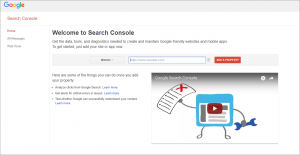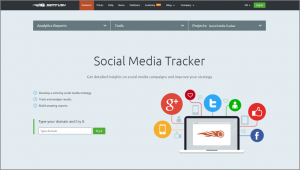Google’s latest update to its iOS app allows users to filter search results by date range.
The post Google’s iOS App Can Now Filter Search Results by Date by @MattGSouthern appeared first on Search Engine Journal.
Google’s latest update to its iOS app allows users to filter search results by date range.
The post Google’s iOS App Can Now Filter Search Results by Date by @MattGSouthern appeared first on Search Engine Journal.
YouTube is adding restrictions on which accounts are able to add external links at the end of their videos.
The post YouTube Changes Rules Regarding Videos With External Links by @MattGSouthern appeared first on Search Engine Journal.
Google has maintained its position ahead of competitor Microsoft, but was unable to top Apple.
The post Google is the World’s 2nd Most Valuable Brand in 2017 by @MattGSouthern appeared first on Search Engine Journal.
Bing Ads is introducing new URL tracking parameters, to further assist advertisers in learning about the source of ad clicks.
The post Bing Ads Upgrades URL Tracking With New Parameters by @MattGSouthern appeared first on Search Engine Journal.
Google is finally upgrading call-only ads with a feature that is available with other ad types.
The post Google AdWords’ Call-Only Ads Upgraded with Ad Extensions by @MattGSouthern appeared first on Search Engine Journal.
Use this list to help avoid making the most common mistakes in your own Adwords account.
The post The Top 10 Most Common AdWords Mistakes by @SusanEDub appeared first on Search Engine Journal.
Find out how you can marry SEO and content by using the right keywords to give yourself a competitive advantage.
The post How to Marry Your SEO & Content Marketing Strategies by @alextachalova appeared first on Search Engine Journal.
Here are five best practices to know when doing enterprise-level link building campaigns.
The post 5 Enterprise-Level Link Building Best Practices by @_kevinrowe appeared first on Search Engine Journal.

 The Content Preferences of LinkedIn Members [Infographic] What kinds of content do LinkedIn users prefer? A new infographic shows that LinkedIn users prefer content that's informative, educational and relevant. MarketingProfs Giving you more characters to express yourself Twitter recently announced they're giving us an additional 140 characters with which to convey our deepest, Tweetiest thoughts by upping their character count to 280. They believe this will encourage more active posting on their platform. Twitter Apple switches from Bing to Google for Siri web search results on iOS and Spotlight on Mac Apple has finally made the plunge with Google - when you search with Siri on your iOS device or Mac, you'll be shown search results from Google. In other news, none of that would have made any sense 20 years ago (according to Josh Nite). TechCrunch Adding LinkedIn’s Profile Card on Office 365 Offers a Simple Way to Build a Professional Relationship LinkedIn and Microsoft have made it official recently with the anticipated rollout of the ability to integrate your personal LinkedIn profile card with your Office 365 profile. Full details and how-to's are available, and the release will happen over the next couple of weeks. LinkedIn Know Their Intention, Get Their Attention: New Ways to Connect and Measure on YouTube Google has announced four new tools to help brands and users "capture the attention of your audience on YouTube." These tools include Custom Affinity Audiences, Video Ad Sequencing and more. Inside AdWords
The Content Preferences of LinkedIn Members [Infographic] What kinds of content do LinkedIn users prefer? A new infographic shows that LinkedIn users prefer content that's informative, educational and relevant. MarketingProfs Giving you more characters to express yourself Twitter recently announced they're giving us an additional 140 characters with which to convey our deepest, Tweetiest thoughts by upping their character count to 280. They believe this will encourage more active posting on their platform. Twitter Apple switches from Bing to Google for Siri web search results on iOS and Spotlight on Mac Apple has finally made the plunge with Google - when you search with Siri on your iOS device or Mac, you'll be shown search results from Google. In other news, none of that would have made any sense 20 years ago (according to Josh Nite). TechCrunch Adding LinkedIn’s Profile Card on Office 365 Offers a Simple Way to Build a Professional Relationship LinkedIn and Microsoft have made it official recently with the anticipated rollout of the ability to integrate your personal LinkedIn profile card with your Office 365 profile. Full details and how-to's are available, and the release will happen over the next couple of weeks. LinkedIn Know Their Intention, Get Their Attention: New Ways to Connect and Measure on YouTube Google has announced four new tools to help brands and users "capture the attention of your audience on YouTube." These tools include Custom Affinity Audiences, Video Ad Sequencing and more. Inside AdWords  Instagram Hits 800 Million Monthly Users, Adding 100 Million in Just 5 Months AdWeek reports: "After announcing this morning that Instagram has 2 million advertisers, the Facebook-owned app also says that it has 800 million monthly users, up from 700 million in April." AdWeek Report: The future of paid-search marketing is machine learning and AI "Machine learning-optimized campaigns saw 71 percent better conversion rates and lower CPCs than those not using it." At least, that's what Search Engine Land makes of the recent report from Acquisio. Search Engine Land Only A Third Of Ad Execs Trust Their Audience Data, Measurements According to a recent survey, only 33% of advertising executives consider their data to be completely trustworthy. Only 29% said they felt their audience analytics/measurement was completely accurate. MediaPost What were your top digital marketing news stories this week? We'll be back next week with more digital marketing news! If you have something to share, pass it along to the newsroom or Tweet me @Tiffani_Allen or @toprank.
Instagram Hits 800 Million Monthly Users, Adding 100 Million in Just 5 Months AdWeek reports: "After announcing this morning that Instagram has 2 million advertisers, the Facebook-owned app also says that it has 800 million monthly users, up from 700 million in April." AdWeek Report: The future of paid-search marketing is machine learning and AI "Machine learning-optimized campaigns saw 71 percent better conversion rates and lower CPCs than those not using it." At least, that's what Search Engine Land makes of the recent report from Acquisio. Search Engine Land Only A Third Of Ad Execs Trust Their Audience Data, Measurements According to a recent survey, only 33% of advertising executives consider their data to be completely trustworthy. Only 29% said they felt their audience analytics/measurement was completely accurate. MediaPost What were your top digital marketing news stories this week? We'll be back next week with more digital marketing news! If you have something to share, pass it along to the newsroom or Tweet me @Tiffani_Allen or @toprank.
The post Digital Marketing News: LinkedIn Top Content, Twitter Gets Character & Apple Goes Google appeared first on Online Marketing Blog - TopRank®.
According to the Microsoft CEO, Bing is going to refocus its efforts on the PC search market.
The post Bing to Focus on PC Search Market After Losing Deal With Apple by @MattGSouthern appeared first on Search Engine Journal.
Following a $2.7 billion fine, Google has agreed to change how it displays shopping search results in Europe.
The post Google to Start Competing on Equal Terms in Shopping Search by @MattGSouthern appeared first on Search Engine Journal.
Clayton Johnson of The HOTH shares insights on link building, content, and how the industry has changed over the years.
The post The Unusual Branding Strategy That Made This SEO Company a Success appeared first on Search Engine Journal.
Twitter's Advanced Search feature can help brands refine their marketing strategies. Learn how you can use it for lead generation.
The post Everything You Need to Know About Twitter Advanced Search by @jonleeclark appeared first on Search Engine Journal.
Here are six creative link building tactics from industry experts that you should try out.
The post 6 Imaginative Link Building Tactics from Industry Experts That Really Work by @malleeblue appeared first on Search Engine Journal.
Here are four important tips on how to manage your social media profiles during a rebranding.
The post 4 Vital Tips on Managing Your Social Media During a Rebranding by @tallchickvic appeared first on Search Engine Journal.
Twitter is testing a 280 character limit while suggesting that letting people say more will get them to tweet more.
The post Twitter Tests a 280 Character Limit: What You Need to Know by @MattGSouthern appeared first on Search Engine Journal.
Google isn’t just a search engine – it’s an everything engine. Here are 19 (fun) reasons to celebrate Google's 19th birthday.
The post Google Turns 19: Here Are 19 Ways This Search Giant Has Made Modern Life Easier by @JuliaEMcCoy appeared first on Search Engine Journal.
In this post, find out how Google classifies webpages as "low quality".
The post How Google Classifies Webpages as ‘Low Quality’ by @danny_taywitter appeared first on Search Engine Journal.
Learn how to use Google Data Studio's Community Connectors to incorporate, integrate, and visualize data from any third-party source.
The post How to Integrate & Visualize Any Source in Google Data Studio by @beaupedraza appeared first on Search Engine Journal.
Content is a key element of your marketing game. To win, you should research what your competitors do. Here's how.
The post How to Turn Your Competitor’s Content Marketing Strategy Against Them by @grybniak appeared first on Search Engine Journal.

As a content marketer, you know that your target audience needs to be at the center of your content strategy. After all, modern content marketing was born to help you create valuable content that satisfies your audience’s quest for answers throughout their customer journey.
However, as the digital landscape becomes increasingly crowded with content — and you feel more and more pressure to create content in less time — you’re likely looking for quick and dirty ways to create SEO-friendly, best-answer content that doesn’t require loads of your precious time. As a result, your first stop on the research train is likely Google’s Keyword Planner tool. But, let’s face it, while it’s an excellent tool, it can only get you so far.
The good news? There are several helpful research tools that can help you uncover real questions your audience is asking around the web — allowing you to gain new audience insights and fill your content plan with relevant, SEO-infused topics. Below we dive into some of those research tools that can help you do just that.
Answer the Public brings Google’s auto suggest feature to visual life. Type in any keyword or phrase, and the almost immediately you’ll be served up a visual representation of queries that are organized by specific question modifiers such as who, what, where, when, why, how, will, are and can.
What makes this tool so fantastic is that it not only helps you identify topics, but potentially some of the nuances of intent behind those questions. The best part? It’s completely free and you can sign up for a short email course to help you use the tool “like a pro.”

BuzzSumo’s recently launched Question Analyzer feature is incredible, allowing you to find the most popular questions being asked from across the web. How? Essentially, BuzzSumo has created a database of real questions from thousands of platforms, including forums, Amazon, Reddit, Quora and other Q&A sites. Just type in a keyword and get a list of related questions sorted by topic, as well as details on volume.

Total access to this tool does require a BuzzSumo Plus subscription; however, you can sign up for a free trial for this feature and try before you buy.
Like Answer the Public, Übersuggest pulls in various Google’s auto suggest keyword queries. And while the tool doesn’t create the same kind of visual representation of questions, the Word Cloud feature does help you connect the dots in a more visual way. In addition, each keyword query allows you to select “Google Trends” so you can get a closer look at seasonality — which is great for future planning. Finally, Übersuggest prides itself on being a tool that can help you uncover new keywords that aren’t available in Google’s Keyword Planner tool.
Of course, we can’t mention Answer the Public or Übersuggest without mentioning KeywordTool.io. Like the former two tools, KeywordTool.io also uses Google’s auto suggest queries as its data source. In addition, like Übersuggest, KeywordTool.io allows you to tap into Google Trends and find keywords that aren’t readily displayed in Google Keyword Planner. So, on the surface, the main differentiator between these tools is user experience.
However, from what I can tell, KeywordTool.io’s paid version, Keyword Tool Pro, offers a little something different than the others. According to the website, “Keyword Tool Pro will not only give you keywords that are hidden from everyone else but will also provide you with necessary data to sort and rank the newly discovered keywords. You will be able to see how often people search for a keyword on Google (Search Volume), how competitive (AdWords Competition), and lucrative (CPC) the keywords are.”

For many marketers, the final benefit may be the most intriguing, as we’re always looking to connect business value to our efforts.
Google Search Console, formerly Google Webmaster Tools, is one of the most helpful SEO and content planning tools out there. From a technical standpoint, Google Search Console enables you to monitor and maintain your entire website’s presence in Google search results. But from a content planning perspective, Google Search Console allows you to see which queries actually caused your site’s content to appear in search results.
The best part? You can filter by page, allowing you to see how a specific piece of content is drawing visibility. This means you can not only find opportunities to optimize existing content with other related keywords it’s coming up for, but also identify gaps and related topics that can spawn additional content.

Back in 2011, Ahrefs launched as an backlinks analysis tool. Since then, the tool has grown into a helpful competitive analysis tool, allowing users to get a deeper understanding of how and why their competitors are ranking — and how they may be able to leapfrog them in the SERPs.
When it comes to generating SEO-infused content ideas, there are a few features that are useful. For starters, the Keywords Explorer allows you to find keywords, analyze their ranking difficulty and calculate the potential traffic you could achieve. Then you have the Content Explorer, which helps you find the most popular content for any topics based on backlinks, organic traffic and social shares. Finally, the Content Gap feature allows you to explore the keywords that your competitors are ranking for, but you don’t.

While this tool isn’t free, you can sign up for a free trial. If you like it, there are a handful of monthly subscription options at different price points.
Generally speaking, SEMrush offers a lot of the same benefits as Ahrefs — from discovering and analyzing keywords to conducting competitive analysis. But one feature that is particularly interesting and helpful is the Social Media Tracker.
These days, social media marketing is an important and necessary part of any digital marketing strategy, serving as an engagement and content dissemination platform. With the Social Media Tracker, you’re able to compare your engagement trends to that of your competitors, as well as see the best-performing posts in terms of engagement. You can then use these insights to craft better, more relevant content that will get more traction on your social pages.

Your industry, budget, internal resources and unique business objectives are all deserving of consideration when selecting research tools that will be a good fit. But, with nearly all of these tools offering free usage or free trials, you certainly have nothing to lose by carving out a little time to test them out. So, choose one to start with and go from there.
What are some of your go-to research tools for generating interesting and relevant content ideas? Tell us in the comments section below.
![]() Gain a competitive advantage by subscribing to the
Gain a competitive advantage by subscribing to the
TopRank® Online Marketing Newsletter.
© Online Marketing Blog - TopRank®, 2017. | Beyond Google Keyword Planner: 7 Easy-to-Use SEO Research Tools for Generating Content Ideas | http://www.toprankblog.com
The post Beyond Google Keyword Planner: 7 Easy-to-Use SEO Research Tools for Generating Content Ideas appeared first on Online Marketing Blog - TopRank®.
[Image: https://www.shutterstock.com/image-photo/girl-clown-colorful-costumes-wig-sunny-446922970?src=pvZU0GbttO00FT7_LamxrQ-1-3]
Everyone likes a good joke. Everyone wants to be entertained. But when it comes to using humor in content marketing, people still hesitate. We are, after all, not here purely to entertain. Our content needs to serve a business purpose, inspire action, and rack up the sweet, sweet conversions.
Can potential buyers really take your brand seriously if you make them laugh?
I call this the Roger Rabbit/Goodfellas conundrum, best expressed by these two quotes:

How do you get the Roger Rabbit benefits of making people laugh, without becoming a Joe Pesci-esque laughingstock?
It can be done. You can still be funny and do serious business. The question is not whether to use humor in your content, but how you use it.
I believe humor serves a different purpose throughout the three loosely-defined stages of a buyer’s journey. Call them top, middle, and bottom of funnel. Or call them Attract, Engage, and Convert, as our team does. The idea is the same: How you use humor should change depending on your context.
Top of Funnel content can be mostly comedy – designed exclusively to entertain people. This is what we call a “chocolate cake” or “dessert” post. The key difference between, say, a Buzzfeed post about funny tweets and your top-of-funnel content is that yours will be focused on a very specific audience.
Use humor as a way of showing your audience that you understand them. That you’re one of them. Make jokes only they will get, and you will invite them into your tribe.
That’s what I did with my “20 Jokes Only a B2B Marketer Will Get.” I called out the audience in the title, and made sure each joke used vocabulary and common experiences that only the intended audience would share. The result: One of the most-shared posts on the TopRank Marketing Blog this year.
In the middle of the funnel—what we call the “Engage” stage—comedy is still a welcome component of your content. But unlike, top of funnel, the comedy can’t be the main attraction. You’ve already brought your audience in. Now you have to provide value beyond a chuckle or two.
Start with a legitimately useful premise, and use humor to demonstrate personality and keep your content readable. For example, the introduction to this post on video content marketing on a budget starts with a funny intro and a truly hilarious image. Images are a great way to introduce a little humor, by the way—especially if you’re on a WordPress blog and the image can show up in the excerpt.
You don’t have to confine humor to the introduction; just don’t forget the value. This post from Jason Miller at LinkedIn is a good example of a funny post that still has plenty to offer the audience. It uses the silly names and weird visuals of a BBC kids show to teach some solid content marketing lessons. And it gave Jason the excuse to make a personalized kid’s book cover:

By the time your customer is almost ready to make a purchase decision, you don’t need to keep throwing out the punchlines. They’re already sold on your brand’s personality; now they need to make sure your solution is the perfect fit.
Bottom-of-funnel content is by necessity more utilitarian, more focused on your offering. But you shouldn’t suddenly become all business all the time. Aim for a consistent brand voice throughout the buyer’s journey. You can still be lighthearted and informal on a landing page or a contact form.
This “Content Marketing Kitchen” post, for example, is an announcement post that serves chiefly to drive traffic to a landing page. I dialed back the jokes but kept the tone light and personal. The result: A bottom-of-funnel piece that still kept people entertained, as the comments show:
 [henslee]
[henslee]
The same comedic approach won’t work for every brand or every audience. People who love zany one-liners from a fast-food company likely don’t want the same from their bank. It’s important to find the degree of comedy that puts you firmly on the Roger Rabbit side of the equation.
That said, if you keep your level of humor appropriate for the stage of the buyer’s journey, you can attract your audience, engage them with entertaining but valuable content, then convert with the same sense of personality and fun that attracted them to begin with.
Learn more about humor in content marketing from a master of the form in this interview with Tim Washer.
LinkedIn Marketing is a TopRank Marketing client.
![]() Gain a competitive advantage by subscribing to the
Gain a competitive advantage by subscribing to the
TopRank® Online Marketing Newsletter.
© Online Marketing Blog - TopRank®, 2017. | Funny Content, Serious Business: How to Use Humor in Content Marketing | http://www.toprankblog.com
The post Funny Content, Serious Business: How to Use Humor in Content Marketing appeared first on Online Marketing Blog - TopRank®.
Link building isn't just about building links. Here's how to build a brand, based on visibility, authority, and trust.
The post World-Class Link Building Is More Than Links by @alanbleiweiss appeared first on Search Engine Journal.
Which tools do SEOs prefer for monitoring competitor backlinks? Find out how our Twitter community answered our latest poll question.
The post Most SEOs Prefer Using Ahrefs to Monitor Competitor Backlinks [POLL] by @A_Ninofranco appeared first on Search Engine Journal.
This post was sponsored by Page One Power. The value of links has remained one of the few constants in the SEO industry, even as search matures into one of the most important channels in digital marketing. But link building is the least controllable element of SEO and can be time-intensive and frustrating without dedicated resources. This is especially true if you’re working with multiple clients who lack links. Outsourcing is a difficult prospect – you need a partner you can trust, who delivers consistent and quality work. Finding the right link building solution can be a painful experience. What […]
The post Agency Partnership Solutions: Page One Power’s White Label Individual Link Product by @pageonepower appeared first on Search Engine Journal.

In this era of social media, brands need to look at their social outreach in a different light. Which means that sometimes, you have to break the social media rules. Spike Jones, Vice President Strategy at Spredfast outlined a new type of social success at the September Minnesota Interactive Marketing Association (MIMA) event.
As Spike shared in his presentation:
“When it comes to social media, sometimes you need to follow the breadcrumbs.”
Why? Because you never know who you might find. Below are some of the top insights and takeaways from Spike’s presentation.
As marketers, we are often taught to include our brand’s logo, messaging tagline and any other branding we might have on everything we produce and influence.
Instead, says Spike, let the content be about the person. By spotlighting people and what inspires them, you will inspire others to look at your organization or company.
One example is Fiskars, makers of the orange handled scissors. They realized they were the conduit for scrapbooking. By highlighting what people were making with their Fiskars scissors, they were finding true fans.

Influencers come in many forms – Oprah vs. the Fiskar scrapbook superheroes
Not every customer is going to recognize your brand. Seek out your rallying cry and be the conduit, not the brand.
Spike told the story of Jared Gaff who was very active on muscle car forums answering every question he could. Chevy interviewed Jared on video, and made him a Chevy Ignites Ambassador. Chevy did not post the video, but, instead, gave the video to Jared. The video has over 15K views, and Jared is a passionate ambassador.
As social media professionals, we are sometimes asked to get likes and followers for our clients. But, don’t forget, that is not getting a customer. We need to look at who is truly our audience and speak to them.
Don't spend all your time talking to people who don't know you yet. Focus on fans, too. @spikejones
Click To Tweet
Spike encouraged us to give people reasons to talk about themselves If you find passion from your fans, elevate it. This is the key behind the best kinds of rewards or fan experiences. When you elevate passion, your fans will be more willing to share it.
For example, I recently had a craving for a Starbuck’s Pumpkin Spice Latte. OK, this is a common fall craving for me. When I got to the store, the line was really long, which I did not expect. I tweeted a photo of the line and Starbuck’s tweeted a fun, witty reply back.

I am a fan, and they just improved my experience by talking to me. They elevated my passion.
This works for B2B, as well. At TopRank Marketing, we connected with an up-and-coming influencer in the IoT space. He wanted to co-create content to improve his personal brand. Our work with him created a raving fan for our client and improved the following a personal brand recognition of the influencer.
How are you connecting your followers and fans to experiences?
When you are focused on getting more from your social, think about leveraging the 1 on 1 interaction. Mass audience messaging may not get you the following you need. Instead, show particular fans they are valued.
On leveraging the on-to-one generation:
Every organization has (or should have) a crisis plan. But, Spike says, what is your ‘love’ plan? How do you get your customers and fans to love your brand?
One key strategy to your ‘love’ plan should include plugging it into every part of the company. Your employees are your best ambassadors. Learn how to leverage them.
People want to connect with people, not companies. @spikejones
Click To Tweet
If you never call your PR firm to implement the crisis plan, just think about the money you’ve saved because your ‘love’ plan worked.
Spike ended the with these key tips on encouraging people to engage with your content:
Then, find a way to meet offline and give them something to talk about.
The key to true social engagement is moving toward a personal conversation. Brands need to find people to rally for them as true ambassadors. Your love plan needs to include true personal conversations that feed your ambassadors/fan’s ego, share information and touch their emotions.
Everyone wants to believe in something bigger than themselves. What is your social rallying cry?
![]() Gain a competitive advantage by subscribing to the
Gain a competitive advantage by subscribing to the
TopRank® Online Marketing Newsletter.
© Online Marketing Blog - TopRank®, 2017. | Break All the Social Rules: Advice from Spredfast VP of Strategy Spike Jones | http://www.toprankblog.com
The post Break All the Social Rules: Advice from Spredfast VP of Strategy Spike Jones appeared first on Online Marketing Blog - TopRank®.
Google is now Apple’s default search provider for Siri, iOS search, and Spotlight search on macOS.
The post Google Becomes Apple’s Search Provider on iOS and Mac by @MattGSouthern appeared first on Search Engine Journal.